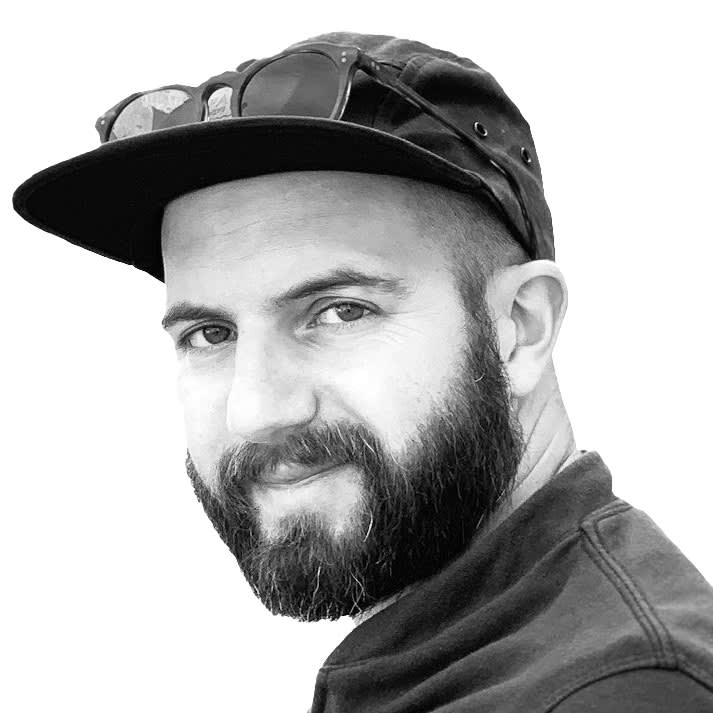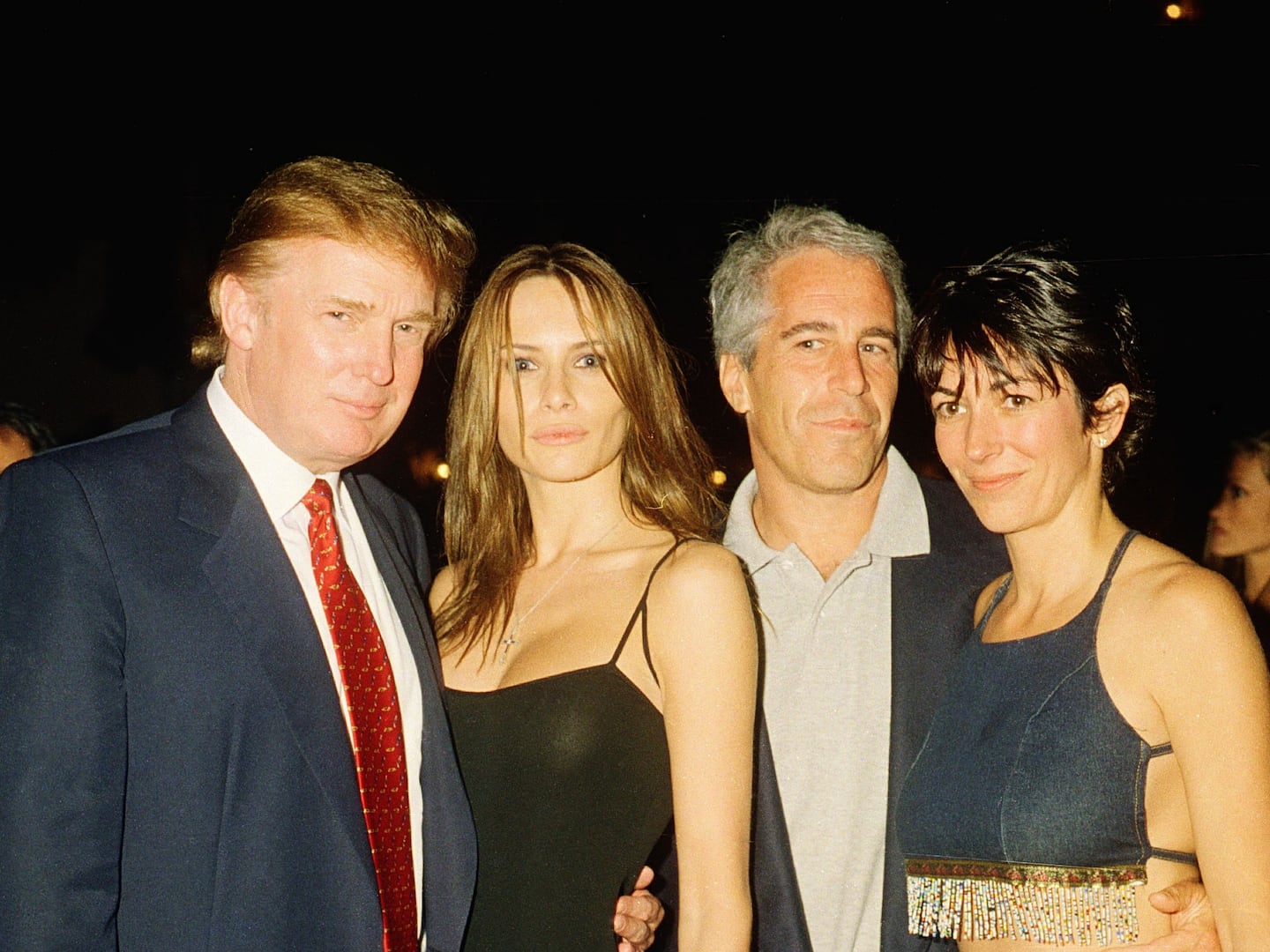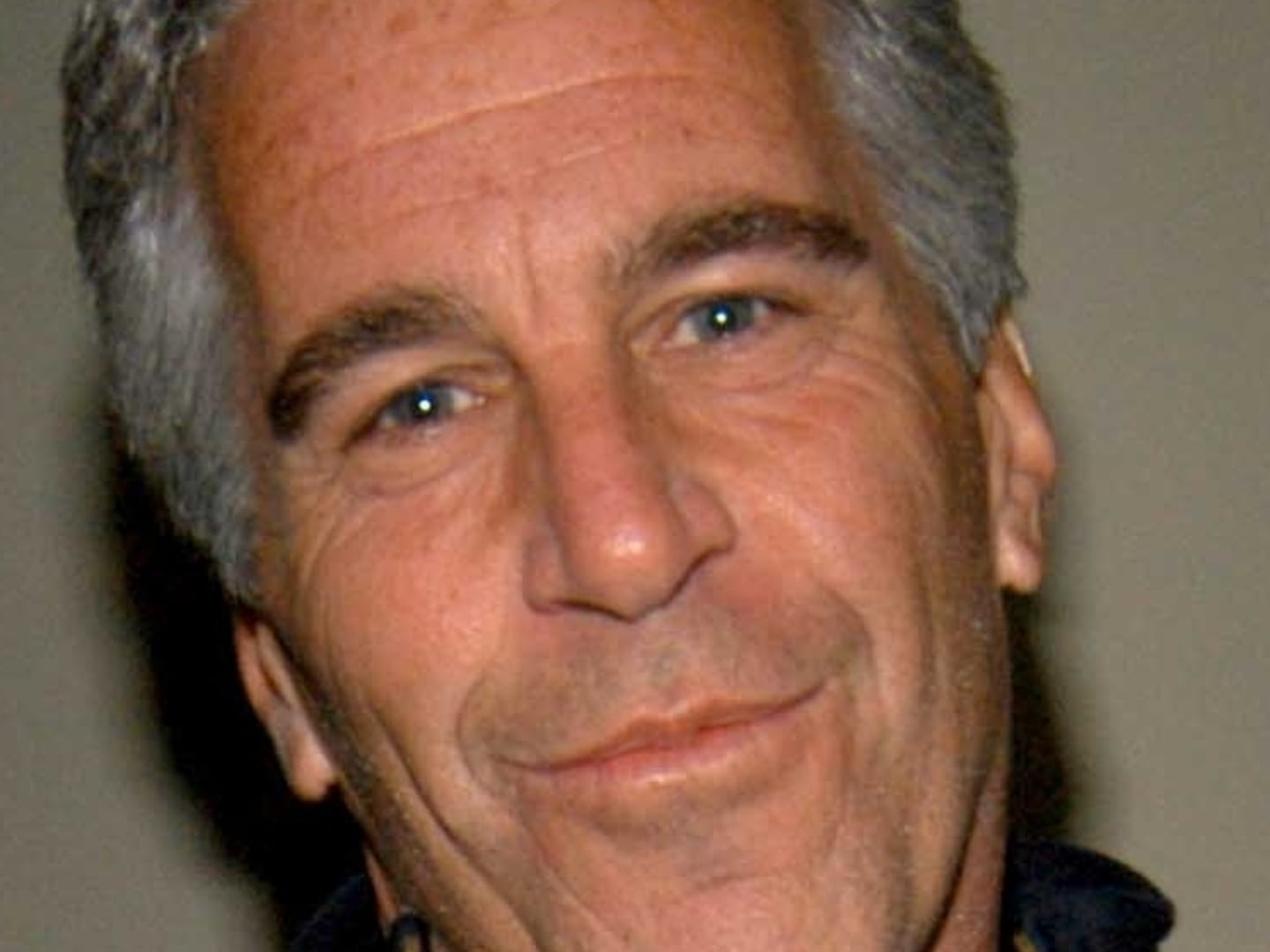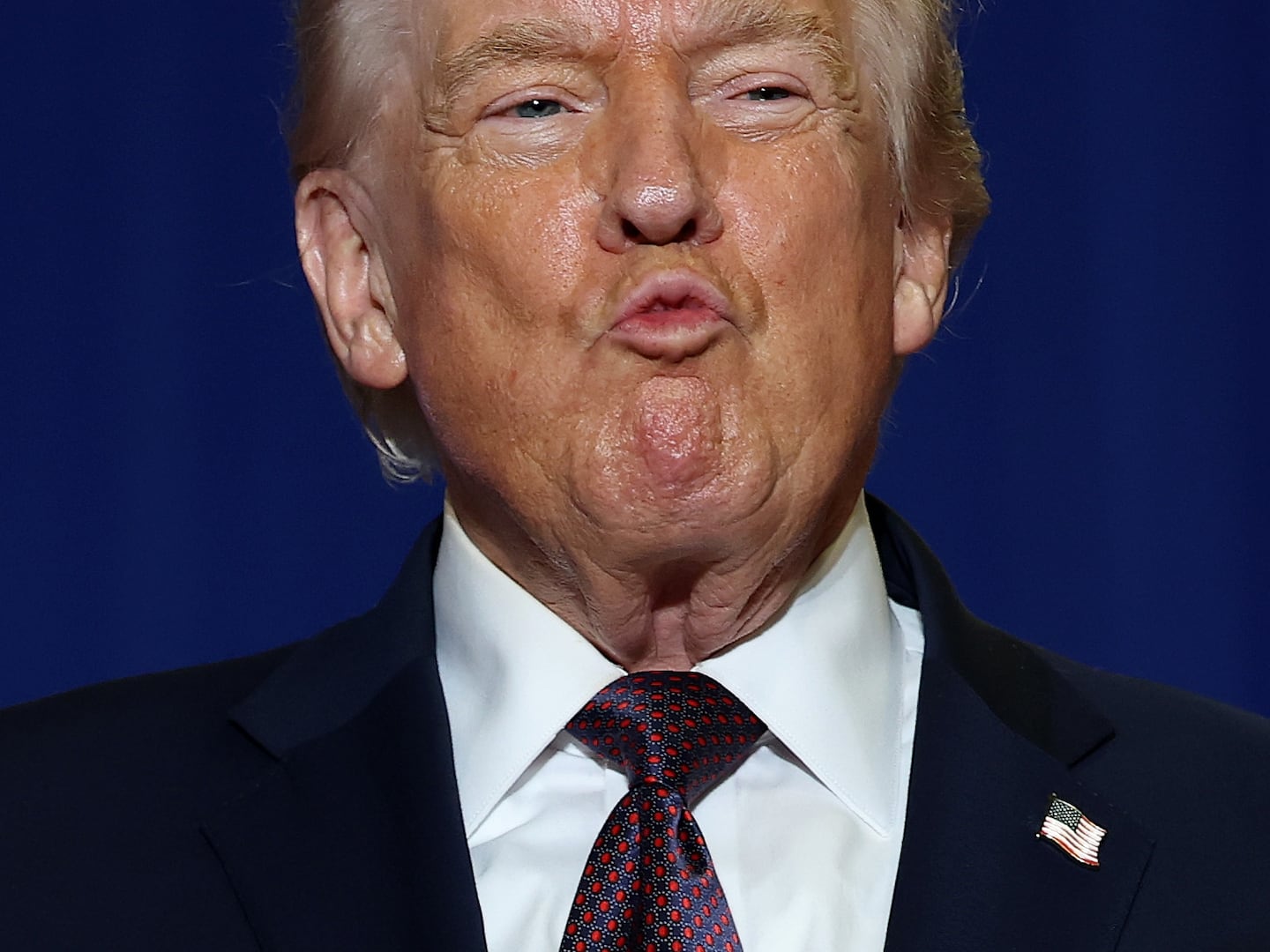ALBUQUERQUE, New Mexico—There they are, in a dark corner of the massive Albuquerque soundstage where Better Call Saul is shooting its fourth season. Big block letters on an unassuming storefront office set’s glass windows read, “SAUL GOODMAN, ATTORNEY AT LAW.”
Is it true? Are we finally going to see Better Call Saul’s Jimmy McGill transform into Breaking Bad’s Saul Goodman this season?
“Yes you are,” the show’s titular star, Bob Odenkirk, tells me carefully, a sly smile on his face. “You are going to see a scene in Saul’s office from the time period of Breaking Bad.” It was “super exciting” and “fun as hell” to arrive at that point in the story, Odenkirk adds.
Each season of the AMC series, which premieres again Monday, August 6 at 9 p.m., begins with a flash-forward past the events of Breaking Bad to a black-and-white future in which “Saul” is now “Gene,” managing a Cinnabon in Omaha. But this season is the first time we will see Jimmy McGill as Saul from the era when he was serving as a fixer for Bryan Cranston’s Walter White.
And yet this is just one of several ways the spinoff is starting to look and feel more and more like its predecessor as it moves forward in time.
As creators Vince Gilligan and Peter Gould revealed at Comic-Con last month, season four will introduce the character of Lalo—more on him later—whom Saul referenced in his first Breaking Bad appearance, but has never been seen on either show. We’ve seen other familiar faces like Lavell Crawford’s Huell and Laura Fraser’s Lydia, but those figures pale in comparison to the cameo in this season’s third episode, one that might have Breaking Bad fans literally squealing with joy.
“I really feel like this is the first season where we hit the ground running,” Odenkirk adds during a break in shooting. “There’s just a feeling of confidence through the writing.” He insists that he’s not being “cocky.” Rather, “it’s just that we know what the show is. We know how far it can go to comedy, how far it can go to drama and the writers can enjoy it more. Dial it up and dial it back with less concern. And we do go a lot of places, I mean, it’s a crazy show.”
“I think this is a huge season as far as his evolution towards Saul,” executive producer Melissa Bernstein, who has helped shape this universe since the Breaking Bad pilot first aired in 2008, adds in her Albuquerque office. “He’s making decisions for himself that we can now recognize as Saul Goodman decisions.”
“To some extent, Jimmy romanticizes danger,” Odenkirk says. “And what happens is the rug gets pulled out from under him and he finds himself far, far deeper than he thought he was. So on the surface, it can look like he’s playing patty-cake and having a laugh, but the truth is these guys are bubbling right under the surface of what he’s doing. The real bad guys.”
“There is a lot of hurtling towards terrifying storylines, whether they are emotional or physical,” adds Rhea Seehorn, who plays Jimmy’s love interest and a far more reputable lawyer named Kim Wexler. “It speeds up quite a bit.”
Though Better Call Saul was originally conceived as a sort of comedic cousin to Breaking Bad, it has taken some increasingly dark turns over the years, culminating in the death of Jimmy’s troubled brother in the season three finale. Alone in his ravaged house, Michael McKean’s Chuck McGill seemed to deliberately kick over his gaslit lantern and presumably perished in the flames.
As season four begins, Bernstein explains that Jimmy is trying to “come to terms” with his “deep-seated guilt” over Chuck’s death. She says there were never any discussions about keeping Chuck around for season four, though it was sad to say goodbye to McKean. Still, the writers “had to motivate Jimmy’s shift to Saul,” she says. “And there’s also an aversion to ‘schmuck bait.’ They don’t want to play games with the audience.”
“Chuck looms so large this season,” Bernstein continues, not only for Jimmy but also for his girlfriend Kim, who is complicit in the events that led to his death, and for Chuck’s former law partner Howard Hamlin, who effectively pushed him out of their firm at the end of season three.
“It’s definitely affecting her and bothering her,” Seehorn says of her character. “She’s not quite sure they couldn’t have found a better way. She even says, ‘Couldn’t there have been a way that didn’t destroy him?’ There are a lot of questions in her head, and Jimmy is not only her closest friend, but her only confidant and he’s cut her off in that area. There are definitely ramifications of that. So the guilt about Chuck, as well as the grieving of Chuck has left her incredibly stunted.”

Rhea Seehorn as Kim Wexler, Bob Odenkirk as Jimmy McGill.
Nicole Wilder/AMC/Sony Pictures TelevisionPatrick Fabian, who portrays Howard, agrees, wondering if there is “anything colder” than the way his character treated Chuck just before he took his life. “When I read that I was like, ‘Do I have to be so mean?’” he tells me. “And then when we played it, it was wonderful, because it just so happened it was the very last scene I had with Michael, that scene of paying him off and shoving him out the door. What that tells me—Howard’s willing to dip into his own pocket to make this thing happen—is that Chuck has wounded him. That means the wounds must be very, very deep.”
“To a great extent,” Odenkirk says, this season focuses on his character after “the shockwaves of his brother disappearing from the earth. And the impact of not having that person he’s trying to aspire to.” He adds that it was a “hard goodbye” when McKean left the set for the last time.
Like Odenkirk, McKean was best known for comedy—especially in improvised films like This Is Spinal Tap and Best In Show—before taking on more dramatic roles later in his career. Odenkirk says he was continually inspired by watching McKean perform dramatic scenes, calling him “adventurous and serious” and “willing to take risks” in playing an “incredibly vulnerable character” like Chuck.
“The challenge of doing this and the reward of stepping away from playing a scene that kind of goes somewhere and goes deep into a person, it’s a great feeling of achievement, really,” Odenkirk says of his new career as a dramatic actor. When he needs to get some silly comedy out of his system during shoots, he occasionally performs improv at The Box theater in Albuquerque. He also has written comedy pieces for The New Yorker and is currently working on a follow-up to his 2017 book of comic sketches and essays, A Load of Hooey.
“You know, in a weird way, sometimes people say comedy looks so hard,” Odenkirk says. “I don’t think it’s hard, I think it’s fun.”
The absence of McKean has allowed other actors, especially on the criminal side of the show’s structural divide, to flourish. Namely, this is a big season for Michael Mando’s Nacho Varga. As the season opens, Nacho is struggling to manage the aftermath of Hector Salamanca’s near-death after he swapped out his cartel boss’ heart pills. It’s looking more and more like Nacho is the one responsible for putting Hector in his iconic wheelchair with the bell from Breaking Bad.
“Hector Salamanca is a mountain of a man in the cartel world,” Mando says as we sit together in Jimmy’s makeshift office in the back of the nail salon set. “And when you bring down a mountain, it creates an earthquake, and that makes ripples all the way back to Mexico. And you change the lives and the reality of all these incredibly dangerous people. And the repercussions of that are going to affect Nacho in ways he could not have predicted.”

Luis Moncada as Marco Salamanca, Michael Mando as Nacho Varga.
Nicole Wilder/AMC/Sony Pictures TelevisionAt the end of season three, Mando says Nacho “made the decision that he’s willing to die to save his father, so that changes the character as well.” Even by switching out Hector’s pills, he is risking his life. “He knows that if he gets caught, he’s dead.”
“So I can tell you that this season, Nacho, who has been a very cautious character, he’s been sort of walking in the periphery of darkness,” he says, “This season, dark forces pull him in the midst of the fire.”
“There’s a saying, ‘If you make yourself a sheep, you will be eaten by the wolves,’” Mando adds, dramatically. “And that’s as true for Nacho this season as it’s ever been.”
“I can also tell you that it’s been one of the most demanding things I’ve ever had to do as an actor,” he continues. “The transformation has been excruciating and rewarding as well. And it’s a really great puzzle to see a character who has a heart, has a moral compass, be thrown in a pond with crocodiles and watch him turn into something that he himself didn’t know was in him.”
Though he’s playing a low-level drug dealer in a Mexican cartel, Mando is grateful that the show allows him to be a “human being,” who “shatters the image” most Americans probably have of someone from that world. “It’s an important character in the gangster culture,” he says. “He’s unlike anything I’ve ever seen.”
“I’ve always been attracted to characters who have been marginalized by society,” Mando says, “because I want to find a way through to their hearts and then bring them back to society and say, ‘No, we’re all part of the same herd. There’s no such thing as outsiders.’”
It is through Mando’s character that we will meet the mysterious Lalo, played by Sense8’s Tony Dalton. Until now, he only existed as a boogeyman in the back of Saul Goodman’s mind.
Odenkirk’s Saul made his very first appearance in a season two episode of Breaking Bad called, naturally, “Better Call Saul.” When Walter White finds out that Saul is advising Jesse Pinkman’s friend Badger to “flip” on them, the meth-cooking pair kidnaps the lawyer and threatens to kill him. Before he figures out what they are after, Saul pleads, “It wasn’t me, it was Ignacio, he’s the one!” referring to Nacho. When he realizes his masked captors don’t speak Spanish, he asks, “Lalo didn’t send you? Oh, thank god!”
“My relationship with Breaking Bad is like someone who goes and sits with a fortune teller,” Mando says. “And that fortune teller says, there’s someone called Lalo and there’s someone called Jimmy McGill. And you and Jimmy McGill are going to do something to this guy Lalo, whatever it is, that four years from now is going to make Jimmy look over his shoulder. So my destiny is already decided by these forces.”
Jonathan Banks shuffles around the heavily air-conditioned soundstage wearing a light jacket, a paper cup of coffee in his hand. The television veteran cracks jokes and gives out warm hugs to crew members he hasn’t seen in a few weeks.
Banks has been acting for more than half a century at this point and has now been playing the role of Mike Ehrmantraut for close to a decade, after debuting the character in the second season of Breaking Bad. On Better Call Saul, the 71-year-old actor has been charged with playing Mike as a younger man.

Jonathan Banks as Mike Ehrmantraut.
Nicole Wilder/AMC/Sony Pictures Television“These writers have given me this wonderful, rich character with many dimensions. And then you throw it back into the prequel, so now we’re back when he was supposedly younger,” he tells me with a slight eye roll. Does he think it’s strange, I ask, to play a younger version of Mike now that he’s older?
“What am I going to do? I have no choice,” Banks replies. “Is it strange? I guess if I look at it that way. And I mean, c’mon, the audience has to be going, ‘He looks a lot older.’ But how many times do we suspend belief in everything we watch?”
As impressive as he was on Breaking Bad, Banks has truly thrived on Better Call Saul, earning three consecutive Emmy nominations for Outstanding Supporting Actor in a Drama Series. He should have won for the first season episode “Five-0,” which delved into the story of how Mike killed the two dirty cops who caused his son’s death. It was a defining moment for the character and for Banks.
“I think if you’ve been violent and you’ve chosen violence, once you’ve taken a life, as horrific as it sounds, if you then do it again, I don’t know that it ever gets easier, but it’s something you’re capable of,” Banks says. “And you’re fully aware that you’re capable of it.”
This season, Banks shares pivotal scenes with Giancarlo Esposito’s Gus Fring, who is now an even bigger presence on the show now after coming back into the fold last year.
“He’s a great guy and just to be with him, I have such a joy in doing it,” Banks says of his old Breaking Bad buddy. “But as far as the characters are concerned, Gus is a businessman, he’s going to use Mike. And when Mike makes the decision that he’s going to go work for him, he’s really gonna work for him. No one’s going to abuse Mike. He’s too smart for that.” He adds, “I have something to offer him, and that will unfold this season.”
Banks admits that working on both shows has been “huge” for his career. “I could be coy about it, but this is something different,” he says. “It kicked it right in the ass. And it’s great, it’s lovely.”
The strange reality of a prequel like Better Call Saul is that while we know the fates of certain characters (Saul, Mike, Gus)—others like Kim, Nacho, and Howard remain a mystery. But the fact that those three do not appear in Breaking Bad should give viewers a reasonable level of concern for their overall safety.
Seehorn in particular reads a lot of worried tweets from fans who fear for Kim’s life. For her part, she says she worries for Kim only in the sense that she would be “sad to let go of” this incredible working environment. “But the other part of me is like, everything I’ve been given on this show is like trust-fall exercise.” She knows that if the time comes when she “has to go,” she can trust that “at least it’s going to be amazing.”
“I think they’re going to write the most compelling story that remains true to all the characters, including myself, and I trust that,” Seehorn adds. “And they don’t tell us a thing. I really don’t know what’s going to happen to her. I feel like I’m on the ride with the fans sometimes, so I do feel protective of Kim. But there’s other times when I’m like, I’m just going to keep getting in the car and we’ll see where we go.”
Mando is similarly aware of Nacho’s uncertain fate. “I think what’s so interesting about the challenge that’s been thrown at me is you would think that living or dying would be your main concern,” he says, “but that’s not Nacho’s main concern anymore. Nacho’s main concern is whether or not his father will live or die.”

Patrick Fabian as Howard Hamlin.
Nicole Wilder/AMC/Sony Pictures TelevisionAs for Fabian, who jokes that up until now he was most famous for being the guy who “kissed Kelly Kapowski” on Saved by the Bell: The College Years, he’s just thankful he’s been allowed to stick around for four seasons.
“The first thing any actor does when they get a TV series is start worrying about when it all ends, so they can feel badly about themselves that they’ll never work again,” he says with a laugh. Now that the show is hurtling towards Breaking Bad, in which his character does not appear, he says, “of course you wonder in the back of your mind” what might happen to him.
He says that one time, when he and Banks were sitting around discussing what the future of the show might hold, Banks reminded him of an important distinction: “That’s very nice, Patrick,” Banks told Fabian. “But I want to remind you. We know that Bobby makes it to Breaking Bad, we know that I make it to Breaking Bad. You, Seehorn, Mando, we don’t know what happens to you. Save your money.”
“I don’t think everybody has to have a violent end,” Fabian adds, optimistically. “And just like in real life, people come in and out of your lives, so I guess we have to wait and see what they have in store for Howard.”
Though he already knows what happens to Mike, Banks says it doesn’t affect how he plays him in the present. “I think Mike has finally reached a point where he just doesn’t care,” the actor says. “But the caveat is that he stays alive for the family. Every time he’s with his granddaughter it reminds him that he must stay alive.”
Plus, everyone on Earth knows they’re “gonna die,” Banks adds. “So we live.”






